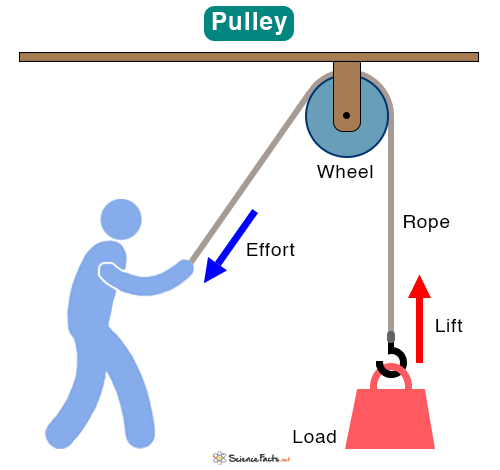Archimedes’ Screw
In today’s age, people living in tall buildings seldom worry about how ground water is lifted to their apartments. However, in ancient times, lifting up water to great heights was a matter of concern. A device known as Archimedes’ Screw came to aid in this hour of need. Its invention is attributed to the famous Greek scientist and mathematician Archimedes of Syracuse in the 3rd century B.C., on his visit to Egypt. It finds applications even today.
Archimedes’ Screw Design:
Archimedes’ screw consists of a screw, which is nothing but a helical surface wound around a cylindrical shaft, fitted inside a hollow pipe. On setting it up at an angle with the water level and turning the shaft manually or by a windmill, the water raises up the helical structure of the screw to the top end. Finally, the water pours out of the tube from its upper opening. The contact surface or the contact points between the screw and the hollow pipe need not be airtight if the amount of water to be drawn out is much larger than the amount of water leaking out from the contact points.

Archimedes’ Screw in History
Although Archimedes is credited with the invention of this apparatus, there are references of such water screws in the inscriptions of ancient kings some 350 years earlier. The great classical author, Strabo, in his writings, also mentions the use of the same device in watering the Hanging Gardens of Babylon, at around the same time. In 1405, a German Engineer by the name of Konrad Kyeser wrote about a theory of improvising it by using a crank to turn it. This mechanism, first written by the aforementioned in his book Bellifortis, found wide use thereafter, and subsequently replaced working the screw by the ancient treading mechanism.
Archimedes’ Screw Uses
In ancient times, it found its use mainly in irrigating fields and as a water pump. They were drawn by oxen or by humans. However, in modern times, it has wider applications in the sectors of hydro-electric power generation and renewable sources of energy.
Archimedes’ Screw Turbine
When used as a hydroelectric screw turbine, the tool works in the reverse order. In this case, water is allowed to enter into the screw from its topmost end at high speed. The energy stored in this flow of water is used to rotate the screw, which, in turn, revolves a generator attached to the base of the screw. The generator then converts the rotating mechanical energy of the screw to electrical energy.
Archimedes’ Screw Conveyor
An Archimedes’ screw not only allows water to flow through its turns. Loose granular materials can flow through it as well. It can be used as a conveyor when turned by a motor to move granular materials like food grains, plastic granules and liquids from one place to another.
Other Uses of Archimedes’ Screw
It is not necessary for all Archimedes’ Screws to have the same number of turns per unit length. Some might have gradually increasing number of turns along their lengths. Such screws are used for compacting waste materials. Their ability to melt materials find applications in die casting machines, injection molding machines and the extrusion of plastics.
This simple device having a pumping action is a useful invention in Physics, which has stood the test of time. In today’s world of diminishing natural sources of energy, scientists are desperately researching alternative energy sources. This energy efficient machine is nothing short of a plausible option in this regard.
Article was last reviewed on Wednesday, February 1, 2023








this website is cool
i agreee